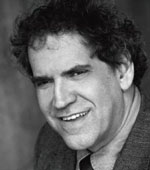The Tefillah Revolution by Chaya Sara Lefkowitz; Menucha Publishers (Brooklyn, 2013); 184 pages; ISBN-10: 1614650950;$17.98.
By Rabbi Michael Leo Samuel

CHULA VISTA, California –In her beautifully attractive book, The Tefillah Revolution, Chaya Sara Lefkowitz begins her subject focusing on one of the most important problems regarding the prayer life of people: Why do we find it so hard to focus on kavanah (intentionality) when it comes to prayer? What is real kavanah, anyway? How can it be attained?
The Tefillah Revolution is a book that deeply explores these issues. Over the years, I have noticed that female Judaic scholars have contributed to a growing literature dealing with the existential and spiritual aspects of Jewish prayer. I suspect that women in general seem to have a greater affinity for God—a point that the author makes later on in her book. She writes:
- While it is a man’s task to immerse himself in Torah learning—the woman’s role is somewhat different; she must cleave to holiness through the physical and mundane. . . . When she adds feelings and heart to her words, even culminating in tears, which are the external expressions of her emotions, tefillah and kavanah are created (p. 29).
A person could argue that the distinction Lefkowitz makes regarding men and women is somewhat artificial; but my experience has shown me over the years that women seem to have a greater emotional affinity with God that differs considerably from men partly because women tend to be more in touch with their feelings.
Later she gives a clearer exposition of how she envisions prayer:
- Tefillah attaches us to Hashem (God) like two pieces of broken glass that are melted and fused together. Our neshamos (souls) are part of Hashem. Through davening (praying) to Him, the soul becomes reattached to its Source. (p. 35)
Lefkowitz argues that the act of prayer shows that God is in control. Moreover, such a realization can “arouse within us feelings of unworthiness and gratitude—we have the tools to transfer the trait to our relationship with Hashem” (p. 42).
She makes several good points; prayer is about connecting and reconnecting with the God who summons our being of the nothingness each moment of our lives. Reality is on its deepest level—relational. By praying, we are affirming that God is not indifferent to our needs and desires.
Throughout much of the book, Lefkowitz speaks about prayer as something that we articulate “to” God. While this is true, there is another aspect of prayer that is equally important—a point that I believe would greatly enhance her overall thesis about prayer: Prayer is also about listening to God through the words of the Siddur. God speaks to us all the time. Sometimes He speaks to us through our conscience; other times the Divine message occurs through the synchronicity of events that occur in our lives. Then again, the God’s Presence may be felt through the words of the Siddur itself—provided that we learn to listen.
Her exposition of the morning prayers in Chapter 19 is one of the best chapters of the book.
In Chapter 8, Lefkowitz describes the importance of preparing oneself for prayer. Although she quotes the famous verse, “I have kept the LORD always before me; “ (Psalm 16:8-11), she should have included the rest of the passage, which resonates with great spiritual energy:
I have kept the LORD always before me;
with him at my right hand, I shall never be shaken.
Therefore my heart is glad, my soul rejoices;
my body also dwells secure,
For you will not abandon my soul to Sheol,
nor let your devout one see the pit.*
You will show me the path to life,
abounding joy in your presence,
the delights at your right hand forever.[1][1]
The author unfortunately left out an entire chapter she could have written about the role of the Psalms and their impact on the prayer life of the Jew. The book is full of great illustrations about famous people who have developed their own pathway to God in prayer. What is missing in this fine book are guidelines for people to develop their own personal spiritual journey through prayer.
There is a famous teaching that is attributed to Rabbi Yisrael ben Eliezer (a.k.a. Baal Shem Tov,1698-1760) the founder of the Hassidic movement.
He was asked why the Amidah, the central prayer of the daily services, begins with the triple iteration: “God of Abraham, God of Isaac, God of Jacob.” Why not just say: “God of Abraham, Isaac, and Jacob?” He answered: The God of Jacob was not the God of Isaac, and the God of Isaac was not the God of Abraham. Each patriarch discovers God in his own way. Each one teaches us the importance of finding a connection with God that resonates within the depths of our own being.
In short, all the anecdotes about how Rabbi So-and-so prayed is fine and good, but in the final analysis, each of us must make our own individual path.
The Tefillah Revolution is a nice book; not too deep and Lefkowitz’s personal testimony about the power of prayer in her life is important as it is inspirational.
[1] Ps 16:8–11.
*
Rabbi Michael Leo Samuel is the author of A Shepherd’s Song: The Shepherd Metaphor in Jewish Thought (Kodesh Press, 2014) He also is pulpit rabbi at Temple Beth Shalom in the San Diego suburb of Chula Vista, California, He may be contacted via michael.samuel@sdjewishworld.com
Pingback: Book Review: The Tefillah Revolution by Chaya Sara Lefkowitz « Rabbi Michael Leo Samuel